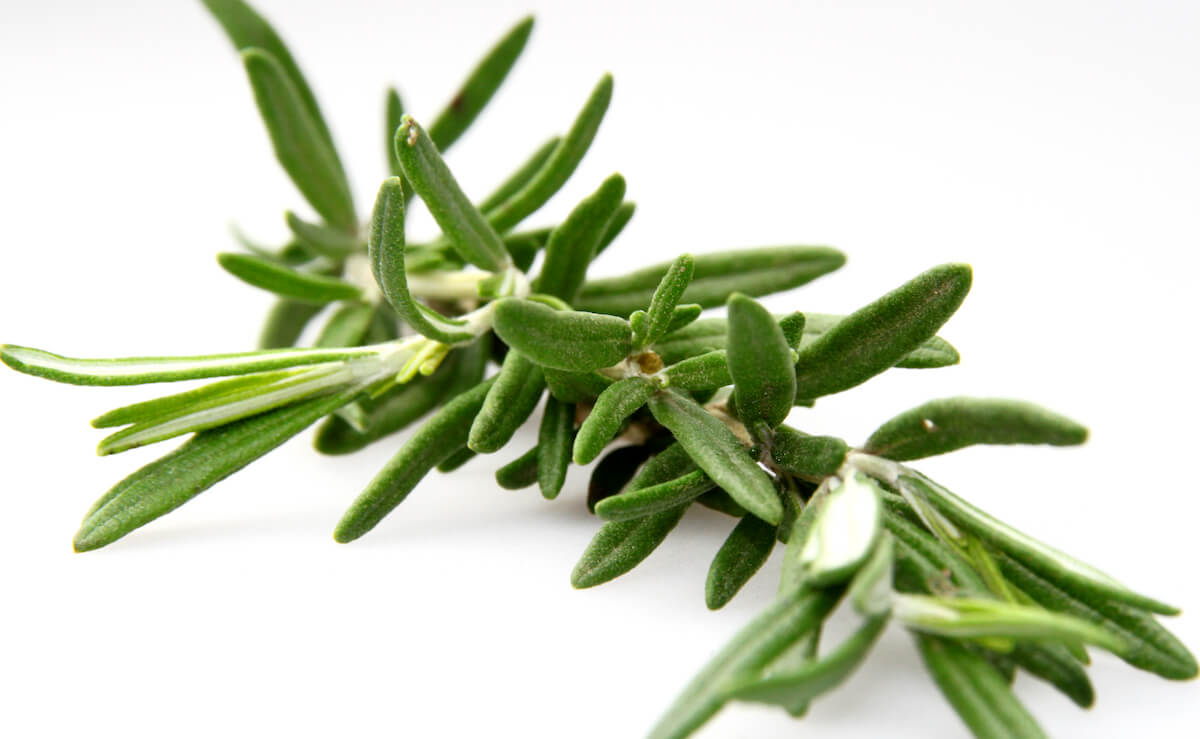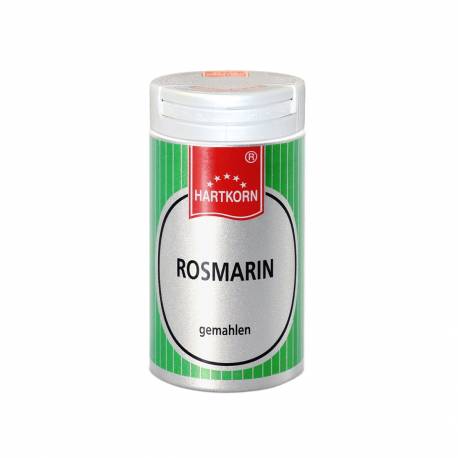Synonyms: botanical family: origin: Classification: spice shape: taste: odour: use: Rosemary smells and tastes pervasively camphor-like aromatic. Fresh from the herb garden or dried, the strongly seasoning leaves are carefully dosed, especially in Italian cuisine, added to meat dishes, fish, potatoes, vegetables and salads. Rosemary is also excellent for seasoning desserts, such as jams and jellies, and pastries. The essential oil derived from rosemary is used in the liqueur, pharmaceutical and perfume industries. tip: Recipe suggestion: knowledge: Botany: Home & Distribution: cultivation & extraction: history: Rosemary
General information
Use
Things to know
 botanical name:
botanical name:
Rosmarinus officinalis L.
Maritime rope, bridal cabbage, wreath cabbage, frankincense, balsamic shrub, Lady's wreath
flowering plants
Mediterranean area i.B. Spain, Turkey, France, Italy
Herb
leaves
aromatic, bitter, astringent
spicy, pine-like
In Mediterranean cuisine, meat, poultry, game, fish and potato dishes, mushrooms, salads, soups
Also suitable for flavouring jams and jellies
Rosemary Potatoes: Wash the small potatoes with the skin well, cut them once and place them on a baking tray brushed with olive oil. Sprinkle the potatoes again with oil, salt and pepper and sprinkle with rosemary leaves. Bake at 200° for 45 - 60 minutes depending on the size of the potatoes.
History:The rosemary wreath at the bride's house is a symbol of love, faithfulness and reliability. It also symbolises the memory of the dead. It was used to purify the air in hospital rooms and worn in a bag around the neck to protect against infection.
The evergreen, densely branched rosemary shrub from the labiate family grows between 1 and 2 m high. Its leaves are very short-stemmed, linear-needle-shaped, 15 to 35 mm long, 1.5 to 3.5 mm wide and curled down at the leaf edges. They have a light green to dark green smooth upper side, while the curled up underside is densely covered with whitish hairs felted and the leaf centre gutter protrudes strongly. At flowering time rosemary has striking light blue flowers.
Rosemary, probably from Lebanon, is native to the Mediterranean's typical semi-shrub vegetation, the macchia, and is widespread everywhere. Today it is found wild or cultivated in Spain, Portugal, southern France, Italy, Yugoslavia, Greece, Tunisia and Morocco, but also north of the Alps to England, in the USA and in Mexico.
Where rosemary is grown in fields, especially in warmer areas, the shoots are harvested by cutting just before, during or after flowering, the leaves are stripped off and dried immediately. They are then usually cut to a length of 5 to 10 mm and are then sold on the market, either fresh or dried, but rarely ground.
The Romans already knew the rosemary bush, which they probably brought back from Lebanon. For centuries, and in some areas to this day, the herb was said to have mysterious powers and great magic. The herb cultivation regulations of Charlemagne mentioned rosemary as an important medicinal herb. The Roman sailors named it Ros marinus - dew of the sea, because the bewitching scent of the maritime bush was already in their nostrils before they saw the coast. It was not used for seasoning in our country until much later.
http://de.wikipedia.org/wiki/Rosmarin







